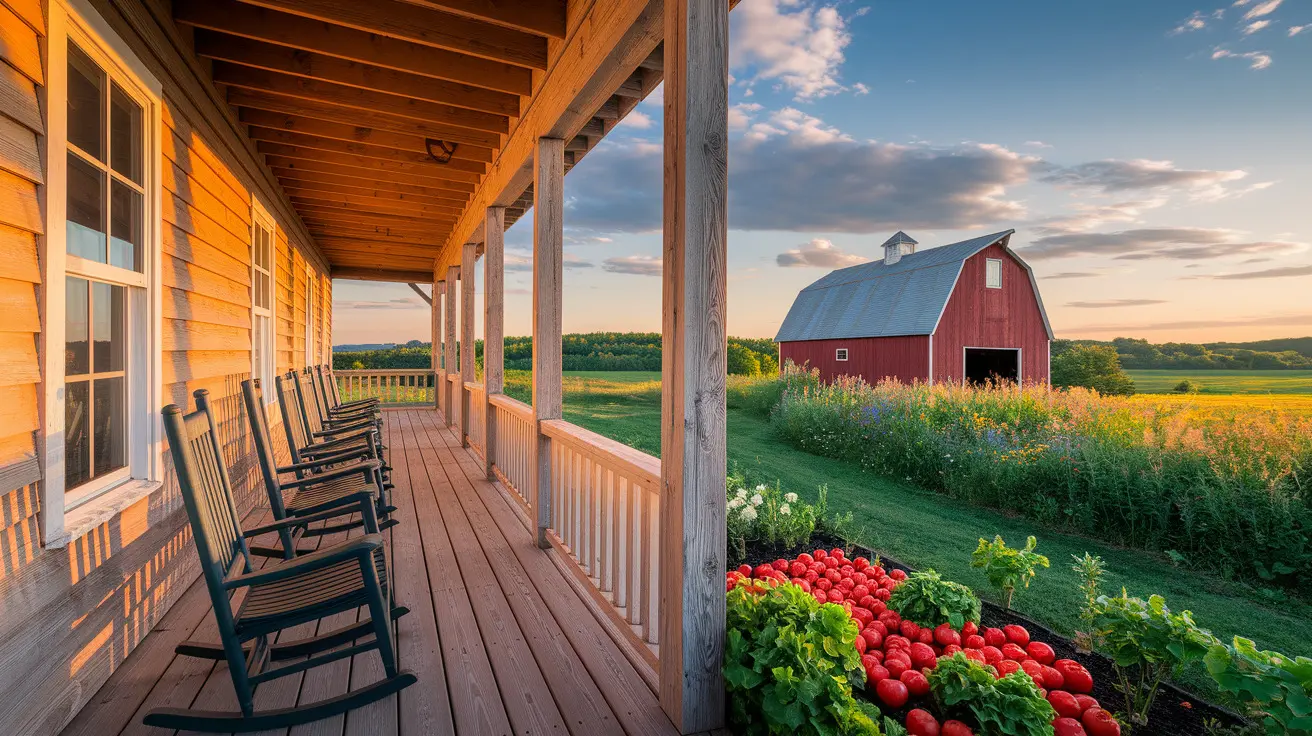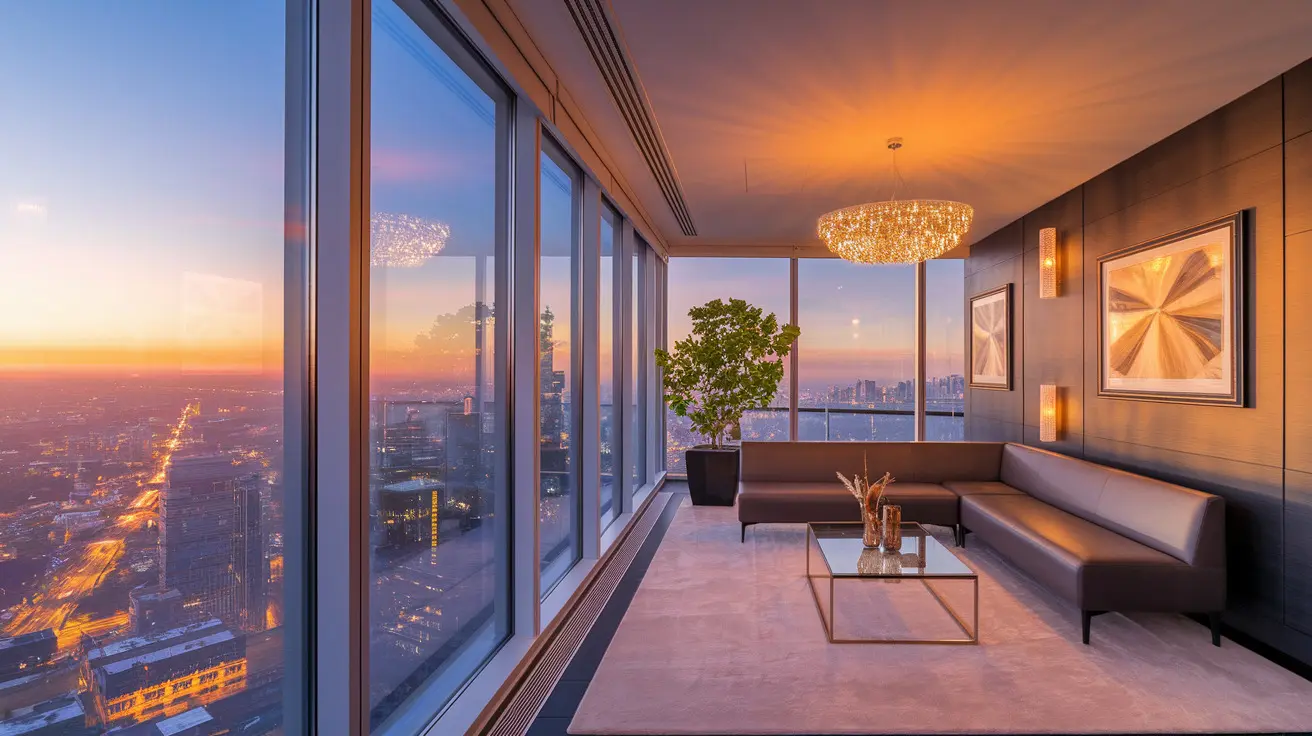Dreams About Houses: Unveiling Their Deep Meanings & Symbols
Discover the hidden meanings and symbolism behind dreams about houses. Explore the fascinating world of house dreams with our expert insights.

“ Dreams about houses reveal how one perceives oneself, one's life stage, and inner space. “
Dreams about houses reveal how one perceives oneself, one's life stage, and inner space. A house can reflect mood, roles, or boundaries, with rooms associated with memory, labor, or rest. The size, light, and layout can all give clues to stress, goals, or change. Popular tropes are that you're moving, doors are locked, windows are broken, or it's a new room. Many notes associate the attic with thought, the basement with fear, and the kitchen with care. Culture, health, and daily events mold meaning, so one symbol seldom suits everyone. For lucid notes, they record who was there, what had changed, and how the house felt. To translate these cues to real life, the handy guide below charts common indicators, quick tests, and prudent action steps for most of you.
Key Takeaways
- A house in dreams can symbolize the self, so pay attention to descriptors such as outside appearance, foundation, individual rooms, condition, and location to get a sense of what aspect of life the dream may represent. Note them down immediately after waking to preserve accuracy.
- Typical situations indicate specific themes, like maturing in a new home or longing for your childhood home. A destroyed or missing house can suggest anxiety or transition, while a strange house can represent undiscovered dimensions of the self.
- Psychological perspectives can inform interpretation, though not determine it. Freudian and Jungian notions emphasize secret urges and the unconscious ego. Contrast these perspectives with your own situation.
- Culture informs symbols and meaning, and interpretations differ in Western, Eastern, and Indigenous traditions. Before deciding, consider your cultural heritage and any crossovers.
- Emotions in the dream provide quick hints. Did you feel secure, confined, or lost? Connect your feelings with your situation, relationships, or commitments.
- Utilize house dreams for personal development. Maintain a dream journal, detect themes, and relate imagery to waking life ambitions or issues. Contact a professional for help if your dreams are emotionally disturbing or interfere with your functioning.

The House as a Symbol of Self
Houses in dreams often mirror the inner self: mind, spirit, identity, and change. This perspective arises in numerous cultures and even in Jungian psychology, where the house can contain archetypes and the collective unconscious. Dream analysis suggests that different houses represent various aspects of our personal space and emotional states, making them significant dream symbols.
1. The Exterior
The house is a symbol of self. A well-polished front with freshly painted trim and sparkling windows can radiate confidence and stability. A cracked wall or broken door can indicate insecurity about how others perceive you.
Style can nuance without complex rules. A mini-terrace house, a wide courtyard house, a Japanese ryokan, or a Moroccan riad might reflect values of order, privacy, or community bonds. Local types, from adobe houses to pile dwellings, can indicate how you conform to your environment.
Scale counts. A tiny hut could mirror humble desires or a desire to escape. A big old villa might suggest grandiosity or be overwhelmed by providing for and accommodating numerous people.
2. The Foundation
The base speaks to support systems, much like the dream meaning of a solid house that represents health, ethics, finances, and the bonds that hold life steady. A solid, arid ground indicates confidence in such supports, while a flooded, cracked, or shifting base can symbolize stress under load, financial fears, or a rift in your core beliefs. Jung associates basements and substructures with the collective unconscious, akin to the symbolism of a haunted house. A deep cellar with old trunks or ancestral relics can indicate archetypal inhabitants and inherited urges, connecting the dreamer to heritage and village, where any disturbance can seem a rupture with lineage.
3. The Rooms
Rooms map to parts of life.
Kitchen: needs, care, and daily work. A cozy, well-stocked space can demonstrate equilibrium.
Bedroom: rest, intimacy, private thought. Locked doors can represent guarded emotions.
Study or office: skill and purpose. Desks left unused might indicate abandoned projects.
Attic and basement: memory and shadow. Hiding boxes can mark stuff primed for expansion.
4. The Condition
Clean and ordered spaces often indicate emotional balance. Mess, leaks, pests, or smoke can indicate turmoil, grief, or an issue you dodge. Renovations imply a busy transformation, while demolition may signify a clearing of self-image.
These repairs qualify as small, practical actions. Repair a hinge, patch a roof tile, and organize one box. Your dream could be signaling a humble, physical move.
5. The Location
Setting frames your social world and security. A house on a busy street may reveal your feel for exposure and pace, while one on a quiet hill may suggest your bent toward solitude and silence, always in balanced measure.
Borders can mean different things. A home by the water can indicate deep emotions. A home by a market can relate to communal functions. A home close to holy ground can relate to principles and religion.
Whether moving the house to a new city block, rural edge, or coast, or shifting walls from one style to another, it can demonstrate an identity in flux and provide a safe space for growth and self-discovery.
Common Dream House Scenarios
Like the self, a dream house is a common scenario reflecting the subconscious mind. Different houses can correspond to roles, characteristics, or life phases, while size and state reveal stability, anxiety, or transition.
A New House
A new house in a dream can indicate a new sense of self, role, or a new life phase beginning. A big house with an airy plan might reflect a desire for expansion and room, while a cramped one may symbolize stress or urgency. Style matters too: a sleek flat, a slope house built into a hill, or a courtyard home each nod to culture, climate, and personal values. Build cues are powerful; if you see carpenters, masons, electricians, or plumbers working, it can indicate that you're "constructing" skills, systems, or boundaries in your personal space. Others tie these dreams to actual markets—purchase, rent, or a job move—because realty trends and bubbles influence how secure or insecure we feel. The world's need for homes is significant, as we add roughly 96,000 daily. Issues of access, cost, and mobility always linger in the background of a new-house dream.
A Childhood Home
This moment frequently stirs up nostalgia, love, and foundations. It can display a desire for security or a return to outdated roles you now transcended.
Notice what was different. A locked room can imply protected emotions. Warm light and clear halls can display peace. A dusty kitchen can indicate laziness or a concern for the environment, such as pollution or air quality.
A Damaged House
Cracks, leaks, or blown roofs can reflect tension, sorrow, or a dread of abandonment.
Storm scenes might echo genuine danger signals. Most of us live at risk of cyclones or tornadoes, and we read news about wind-safe design and coastal rules, so our minds may go round this.
If repairs begin, it can signify recovery. If you see damage propagate, it can signal inundation.
A Lost House
Not finding the house can signal doubt about identity.
If streets keep looping, it might symbolize a life maze, a decision with no clear guide.
A boarding house can add a twist: shared space, no full rights, and a landlord's access. That can reflect feeble leadership.
Homelessness themes can emerge when safety nets fray or when policy discourse about rent, rights, and HUD USER reports hangs heavy.
An Unfamiliar House
Unknown rooms can represent parts of you that you have not yet encountered. If the house is classy and large, that can demonstrate a desire to grow. If cluttered, it can display overload.
Legal or market hints, such as deeds, deposits, or a past bust like 2008, may appear. These prompts frequently substitute for hazard.

Psychological Interpretations of House Dreams
House dreams frequently reflect identity and mood, with the dream meaning often tied to the size and condition of the house. A large home may symbolize strong intuition and security, while an old house might evoke nostalgia, revealing how someone perceives their personal space and inner life.
The Freudian View
Freud, for instance, interpreted house dreams as indicators of repressed thoughts and emotions pressing for discharge, with rooms and fixtures substituting for subconscious drives and protected desires. A cracked wall might suggest leaks in self-control. Damp proofing in a basement reverberates how we keep painful feelings from seeping into daily life. Hidden asbestos conjures memories of old, unsafe beliefs sealed off but still dangerous. Bedrooms can cue desire or intimacy. A locked study can imply withheld words. Dusty trunks in an attic represent untested faith or shame. Sideways wandering on one level with doors that return to you can indicate stasis, a life on hold. We always return to childhood homes, bringing those first scenes of protection and order. The dreamer steps into a trusted or terrifying hallway that continues to define the mood. Market jolts, such as anxiety fueled by a housing bubble, can weigh a dream house with expense, danger, and damage, even if actual prices in a given nation increased moderately over the long term. Brief sojourns at a hotel or hostel can situate the self in 'lodging', a temporary identity, not a fixed one. Recurring house dreams may track transition: a move, a new role, or a split, making the house either an anchor or a strain. Or even a home network, which arises as jumbled wires, suggests connections and transmissions from family or friends that the unconscious attempts to organize.
The Jungian Perspective
Jung framed the house as the psyche: upper floors for modern awareness and public roles, mid-level rooms for personal habits and values, and the cellar for the deep, shared images of the collective unconscious. An attic can hold unfinished thoughts and half-kept promises to yourself. A kitchen can represent nurture and daily labor. A workshop responds to crafts and tools, such as drilling or facade work that carves the self's "outer face." Earth-sheltered homes in dreams may emphasize grounding and energy saving, whereby soil type, drainage, and waterproofing signify the necessity for a sound base, precise flow, and safe boundaries. Orientation to the sun or wind can reflect how one positions life to accommodate a climate of stress or nurture. Open-air museums might exhibit ancient dwellings and crafts in the open, the psyche exhibiting tradition and skills. A civic note may show up too: a barrier to entry, a permit maze, or a policy board, like a clearinghouse for rules, as a symbol of systems that gate safety and access. If the dream flits from one floor, it may manifest not a genuine relocation. When introducing stairs, shafts, or tunnels, it can indicate depths and transformations.
An empty summerhouse might announce rest, play, or a second self lurking.
How Culture Shapes House Dreams
House dreams frequently appropriate significance from regional principles, construction traditions, and communal ceremonies, often reflecting dream psychology. The concept of a secure, valiant, or 'good' home in waking life filters into dream symbols that appear at night.
Western Symbolism
A house dream frequently represents the self, with rooms corresponding to personas or states of mind. Attics refer to thought and recollection, basements to impulse or dread, and the hearth to affection. For the Greeks, a hearth or little altar connects to home gods, so a fire ablaze can represent safeguarding or honor. Conversely, a broken heart signifies tension or bereavement. These dream-image banks are fueled by contemporary housing trends, including their fascination with large houses and interpretations.
Contemporary housing trends fuel these dream-image banks. Lustron houses—enameled steel homes constructed after World War II—continue to read as clean, low-care to certain people. Their hardy shells can exhibit a yearning for steadfastness. The tiny-house movement can manifest as a small, tidy abode that encapsulates aspirations for reduced expense, scaled-down consumption, or an opportunity for reinvention, with size signals in the vicinity of 37 m² (400 ft²). Smart homes appear: "domotic" tech (home automation) may mirror a need for control or data-driven calm, not to be confused with the language term "Demotic".
Social frames are essential. In surveys, tenure follows income or wealth, so dreams of keys, deeds, or landlords can resonate with status worry or pride. A housewarming scene can signify ties and transition. In some cultures, even the act of an animal walking in first, such as a cat in the Belarus tradition, can signal the desire for fortune.
Building science provides the canvas. Quiet rooms, clean air, and good light correspond to comfort goals in waking life, so dreams of drafts, glare, or smoke can reflect concerns about thermal, acoustic, or air-quality defects. Mentions of fire stairs, seismic bracing, or digital models might reverberate with safety signals from disciplines acknowledged by the National Institute of Building Sciences, from fire protection to building information modeling.
Eastern Symbolism
In Eastern contexts, the house dream frequently reflects a projection of an inner life connected to obligation and harmony. In Hindu perspectives, different houses and thresholds can correspond to states of consciousness and karma. A sunny, open courtyard could indicate pure intention, while blocked entrances suggest outstanding obligations or unfinished deeds. For instance, in the tafsir of the Qur'an, a house can represent life, family, and one's own matters. A sound roof indicates a state of order, while a cracked wall suggests a breach in trust or health, and guests in the house can reflect lawful gains or tests. Traditional Japanese values emphasize harmony and respect for the home. A tidy genkan (entry) can indicate social balance, but a messy tatami room may signal tension with etiquette or roles. Regional tech and space norms also filter in. Compact, efficient plans and home‑automation scenes can show a wish for quiet control, energy-wise living, and better indoor air and light. These are core goals of building science, which blends physical tests, field measures, and social data to guide performance, fix failures, and set new methods.
Indigenous Beliefs
To several Native American tribes, the house is a sanctum representing mind and spirit. Natural signs matter: wind at the door, the path of the sun on a wall, or the sound of rain inside can shift the meaning. A lodge in balance with the land frequently indicates well-set intention. A slanted frame close to a bone-dry runoff cautions against hedonism and desertion from traditional ways.
In many African cultures, a house dreamed of can indicate connections to ancestors and the village. The house's location close to a path, market, or tree is essential, as place and lineages of kin define identity and responsibility. Courtyards echoing with laughter can signify unbreakable connections. Empty rooms distant from neighbors can signal a drift toward danger or banishment.

Emotional Responses to House Dreams
House dreams frequently reflect day-to-day stresses, past experiences, and one's perception of self and space, often revealing insights into the subconscious mind. The same door or hall can feel secure or chaotic, influenced by culture, age, and previous homes.
Feeling Safe
A house can represent safety, prestige, or community, often symbolizing the American Dream. We associate serene dreams with stable habits, reliable relationships, or a strong identity. There's a reason childhood houses pop up and ignite nostalgia; they can be comforting, especially when life feels hectic or unstable. The dream meaning behind these familiar spaces can evoke warmth and security.
Specifics in the dream count. A cozy kitchen, a light that works, or a locked door can communicate love and power. Show houses, fully furnished and wired to mains, may surface when one desires order and evidence that life fits. Mixed-use zones, such as Virginia's Ballston Quarter or specific areas of Bitola, merge residential, commercial, and entertainment; dreams dreamed there can set equilibrium and smooth walking, reflecting the complexities of our personal space.
Cultural frames set the tone. A Riad, a Cape Dutch gable, or a Tata Somba compound may cue safety when those homes mean home in your memory. Mass housing estates, typical in Central and Eastern Europe and erected by a single contractor, can feel safe and serene, particularly when they cut off through traffic and include play space. Even repetitive safe house dreams can still indicate the call to respect ancient ties or uncompleted farewells.
Feeling Trapped
Others experience lingering distress that follows them into their daytime life or interrupts their sleep or work. Claustrophobic rooms, windows with bars, or interminable corridors tend to accompany anxiety about expenses, work, or what's to come. Squatting scenes—locked doors, alarms, and a sense of trespass—may convey fear of not having a legitimate or ethical "claim" to your personal space or guilt related to previous decisions. The symbol can resonate even more in countries with more powerful squatting traditions. Thick estates, where safety might become stifling when identical blocks obscure personality, can relate to the dream meaning of a chaotic house. Mobile homes—trailers, not RVs—manifest as immobile tires or failing anchors when someone questions roots. Even reliable sources leak in: a news piece on affordable housing in America, economic gaps, or a page with dead links can seed images of cost, risk, and loss. These recurring trapped-house dreams tend to flag unresolved conflict, with many describing how they keep returning to the same door or floor plan until an issue is confronted.
Feeling Confused
Confusion frequently appears as shifting floor plans, stairways to nowhere, or rooms that change dimensions. This can correspond to mixed roles at work and home, as in a mixed-use block where the lines get fuzzy.
They can arise with regret or doubt. One of those show homes that looks good but has a secret flaw can indicate reservations about a scheme. A travel trailer next to a fixed house can stir identity questions: Am I settled or still in transit? Others employ an introductory note log to organize emotions, identify trends, and connect the dream to actual action during the week.
Using House Dreams for Personal Growth
House dreams often map our inner life, with different houses, rooms, and fixtures serving as dream symbols for identity, mood, and aspirations, prompting transformation.
Keep a Journal
Record the dream meaning of the house right after waking: layout, levels, light, colors, who is there, and what you feel in each room—note symbols with care. An attic can store old thoughts and half-kept promises, while a cluttered kitchen in a large house can point to stress or unmet needs. If you wander on one floor but never climb or descend, mark it. That lateral loop can show stasis that slows growth.
Include specific house details you observe. The essence of visitability is a no-step entry, wide doors, or an easy-to-use bath, which reflects a desire for convenience, accessibility, and hospitality for yourself and others. A modular unit constructed from 20-foot containers can send a message of pushing yourself to create life in defined modules, on schedule, and within boundaries.
Turn pictures into emotions and deeds. Use Jung's "active imagination": Sketch the house, label rooms with moods, and write what each room asks of you. Quick scribbles, performed every day, assist the subconscious mind in spilling something about my identity.
Identify Patterns
Review entries every week and highlight repeats. Old family houses that return can demonstrate how those initial bonds still influence you. They can summon scenes that require resolution. There's something about single-family homes, apartment blocks, dorms, or barracks with an individual tone — privacy, density, duty, or shared rules. A street of series-built blocks with identical fronts can reflect a cookie-cutter life or hint at savvy cost containment that liberated hours for ambition. A Japanese house that gets torn down and rebuilt after some decades may nudge you to refresh habits rather than clutch form. Modular buildings, constructed offsite and connected by solid connections, can embody a design to expand in sections while still satisfying your own 'code.' An interesting dream of smart home robots could identify a desire to mechanize drudge work and spend more time on care or craft. A stately villa might symbolize the lure of home ownership and a settled life, representing the American dream. A visit from a public agency like a housing department can represent regulations, budgets (for reference, the U.S. HUD budget was USD 60.3 billion in FY2021), and the reality check that contextualizes any scheme. Track floor levels: basements for roots and fear, ground floor for daily roles, stairs for choice, and top floors for thought. If the same stuck hall keeps you walking sideways, identify the life realm that stalled and what tiny action would shatter that loop.
Connect to Life
Connect symbols with actual transformation. If rooms are dirty or packed, set a short, straightforward task: clear one shelf, make one call, or book one talk. If access appears, such as a ramp, low threshold, or wide door, take it as a sign to make your life more open. This could be slack in schedules, friction-lowering apps, or home modifications that support all ages and bodies. If quake risk in a lone house appears as terror, verify, not panic, specific assertions may be exaggerated, and logic drowns out static. When policy or market forces loom, such as cookie-cutter blocks, modular fashions, or an international style catalog, demand to know where you appreciate freedom and where established standards can nurture you.
Perform one' active imagination' drill weekly. Walk through the dream house with your mind, converse with one room, and transcribe its counsel in simple language.

Conclusion
House dreams focus on real-life needs. Rooms correspond to portions of the self. A sunlit yard may indicate optimism. A stuck door can suggest apprehension. A flood in the kitchen can signal anxiety over nurturing or feeding. A new room can signify new objectives. Habits trump one crazy night.
To interpret, record your emotions. Take in the scene, the light, the noises, the tiredness of the walls. Keep links to your life, connections, job, and wellness. Use small steps. Solve a single nag. Have one definite purpose. Test out a new habit. See how the dream changes.
To extract more from this guide, maintain a two-week dream journal, jot down a line each morning.
Frequently Asked Questions
Recent Dreams
Other Dreams
Read more dream interpretations
Dive into the realm of dreams. Explore various dream interpretations. Enhance your understanding of what your dreams could be telling you.
About the author
We provide insights to harness the power of your dreams, improving not just your nighttime narrative, but your daily life as well.
















